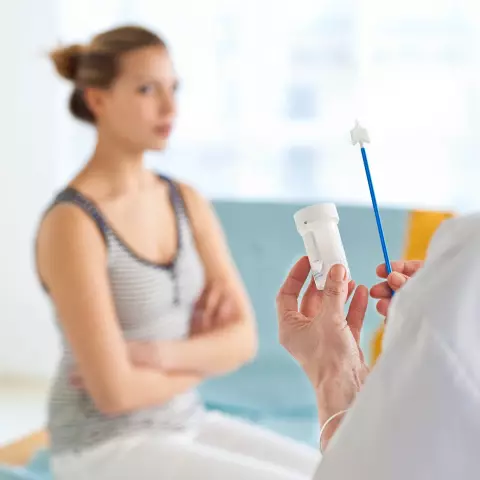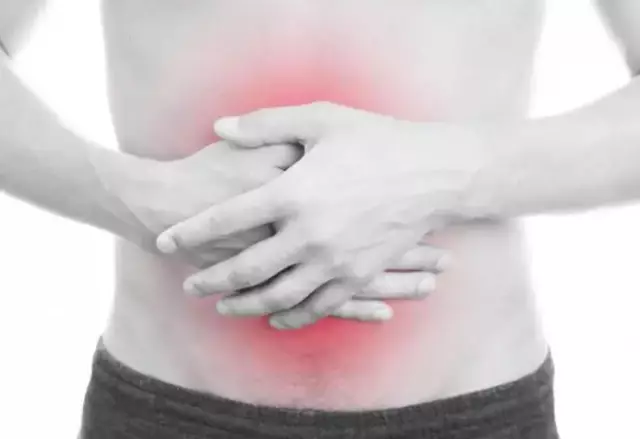- Author Rachel Wainwright [email protected].
- Public 2023-12-15 07:39.
- Last modified 2025-11-02 20:14.
Cervicitis

Cervicitis is a fairly common infectious disease that involves damage to the cervix. Cervicitis can occur as a result of sexually transmitted diseases, injury by barrier contraception, or be one of the manifestations of tumor development. Cervicitis can also form during pregnancy.
Cervicitis is diagnosed with a medical examination of the cervix using mirrors and colposcopy. It is characterized by hyperemia in the area of the external opening of the cervical canal, strong mucopurulent discharge, and in some cases an eroded surface.
Cervicitis symptoms
If cervicitis is suspected, symptoms at an early stage may be as follows - intense discharge that lasts several days after the end of menstruation. In the early stages of cervicitis, symptoms may be subtle. In this case, a woman may not even suspect that she has a disease.

In a more serious stage, cervicitis has pronounced symptoms:
- Bleeding;
- Itching and irritation of the genitals;
- Pain during intimacy, after which spotting may also form;
- A burning sensation when urinating;
- Pain in the lower back and abdomen that occurs during intercourse.
With a severe form of cervicitis, abundant purulent discharge is also possible, with a persistent unpleasant odor, severe itching in the vagina, abdominal pain, fever and nausea.
Types of cervicitis
By the nature of the development of the disease, cervicitis is divided into acute and chronic. Acute cervicitis is accompanied by purulent or mucous discharge from the vagina, as well as severe pain in the lower abdomen.
Chronic cervicitis occurs against the background of other inflammatory diseases or develops from primary cervicitis that has not been treated. In the chronic form of the disease, there is hypertrophy and induration of the cervix, the reason for this is the formation of small cysts.
Also cervicitis of the cervix can be purulent, it occurs in most cases against the background of gonorrhea. Viral - formed from sexually transmitted viruses. Bacterial - arising against the background of bacterial infections, for example, vaginosis.
In addition, nonspecific cervicitis is isolated, which are formed when the microflora of the vagina changes, not associated with genital infections. Atrophic - in which women experience a thinning of the cervix. Focal - affecting only certain areas of the cervix.
Causes of cervicitis
In most cases, cervicitis occurs due to the presence of vaginal sexually transmitted infections: chlamydia, gonorrhea, trichomoniasis. Cervicitis of the cervix can also occur in patients infected with genital herpes virus and human papillomavirus.
There is a risk of cervicitis at early onset of sexual activity, the presence of several sexual partners.

In addition, chronic cervicitis can be a reaction to hygiene products, birth control, or tampons that are not changed regularly. All this leads to irritation of the cervix, which becomes much more susceptible to infections during this period.
In some cases, chronic cervicitis occurs as a result of allergic reactions to condom latex or special spermicidal formulations.
Cervicitis treatment
Antibiotics are used to treat cervicitis. In rare cases, if cervicitis does not go away after a course of antibiotics, cauterization of the inflamed areas is performed.
In cases where cervicitis occurs during pregnancy, consultation with a specialist in infectious diseases is imperative. This is due to the fact that cervicitis during pregnancy can lead to infection of the fetus with an infection and the risk of premature birth.
YouTube video related to the article:
The information is generalized and provided for informational purposes only. At the first sign of illness, see your doctor. Self-medication is hazardous to health!






